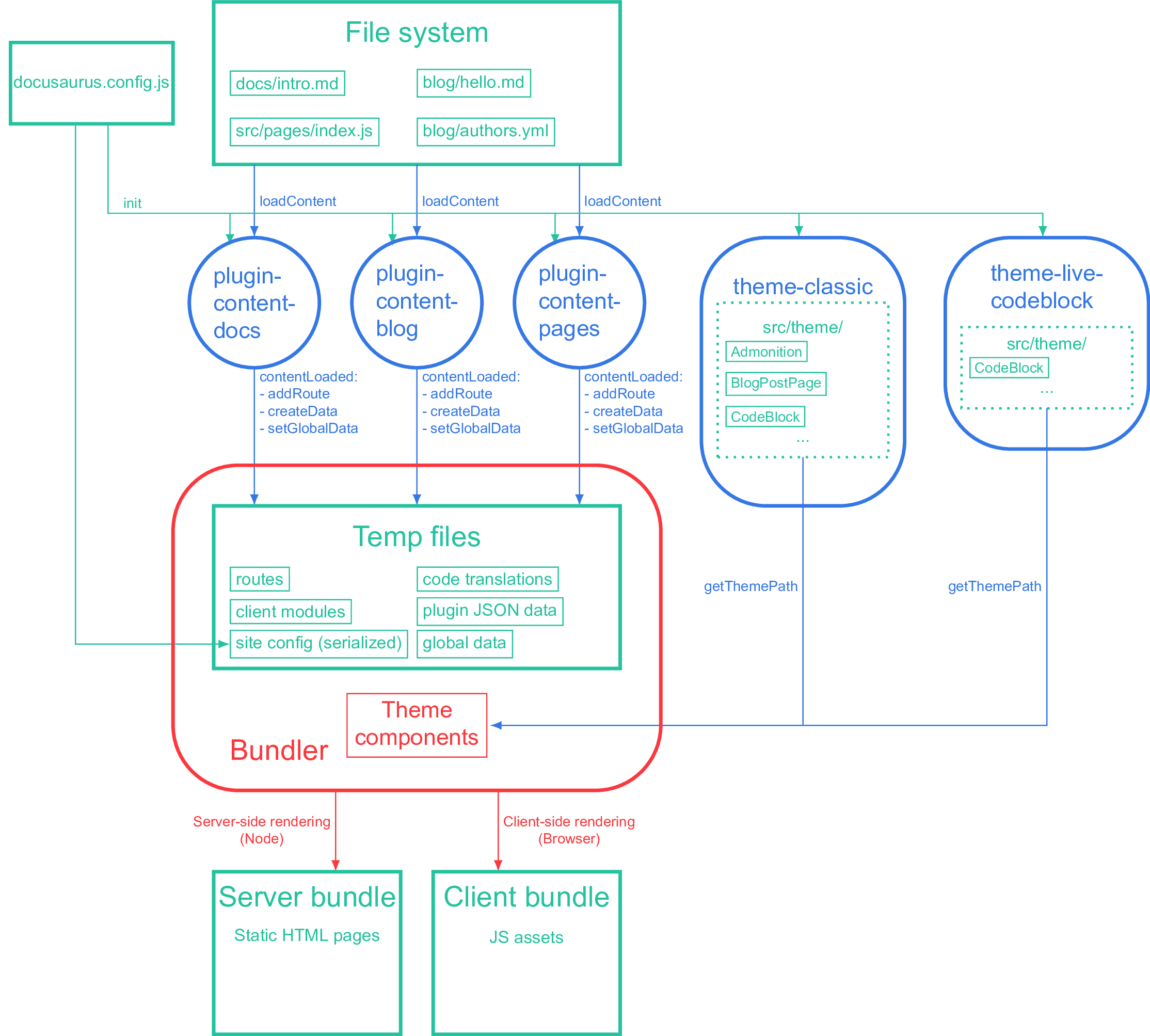Architecture

This diagram shows how Docusaurus works to build your app. Plugins each collect their content and emit JSON data; themes provide layout components which receive the JSON data as route modules. The bundler bundles all the components and emits a server bundle and a client bundle.
Although you (either plugin authors or site creators) are writing JavaScript all the time, bear in mind that the JS is actually run in different environments:
- All plugin lifecycle methods are run in Node. Therefore, until we support ES Modules in our codebase, plugin source code must be provided as CommonJS that can be
require 'd. - The theme code is built with Webpack. They can be provided as ESM—following React conventions.
Plugin code and theme code never directly import each other: they only communicate through protocols (in our case, through JSON temp files and calls to
During bundling, the config file itself is serialized and bundled, allowing the theme to access config options like